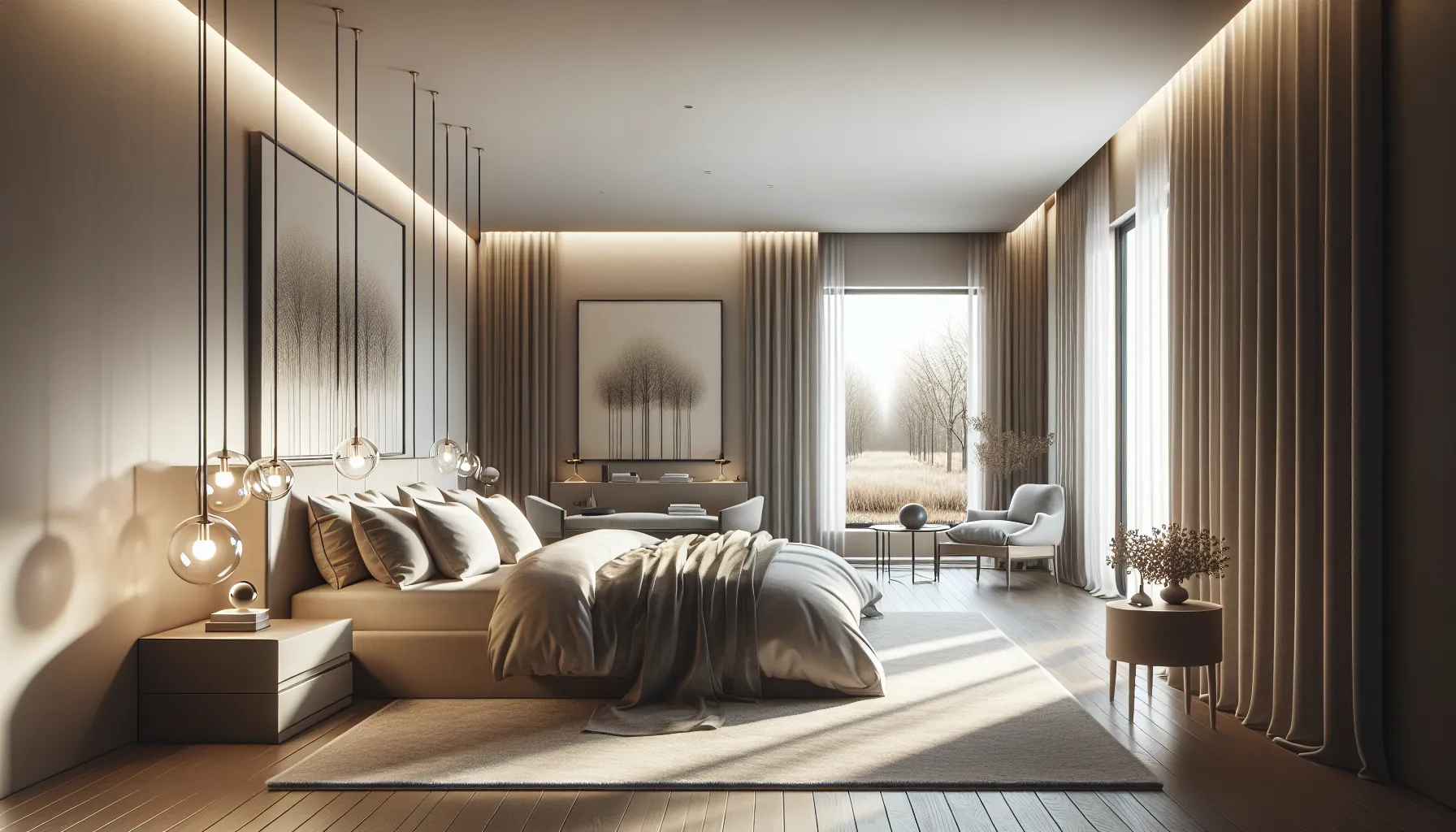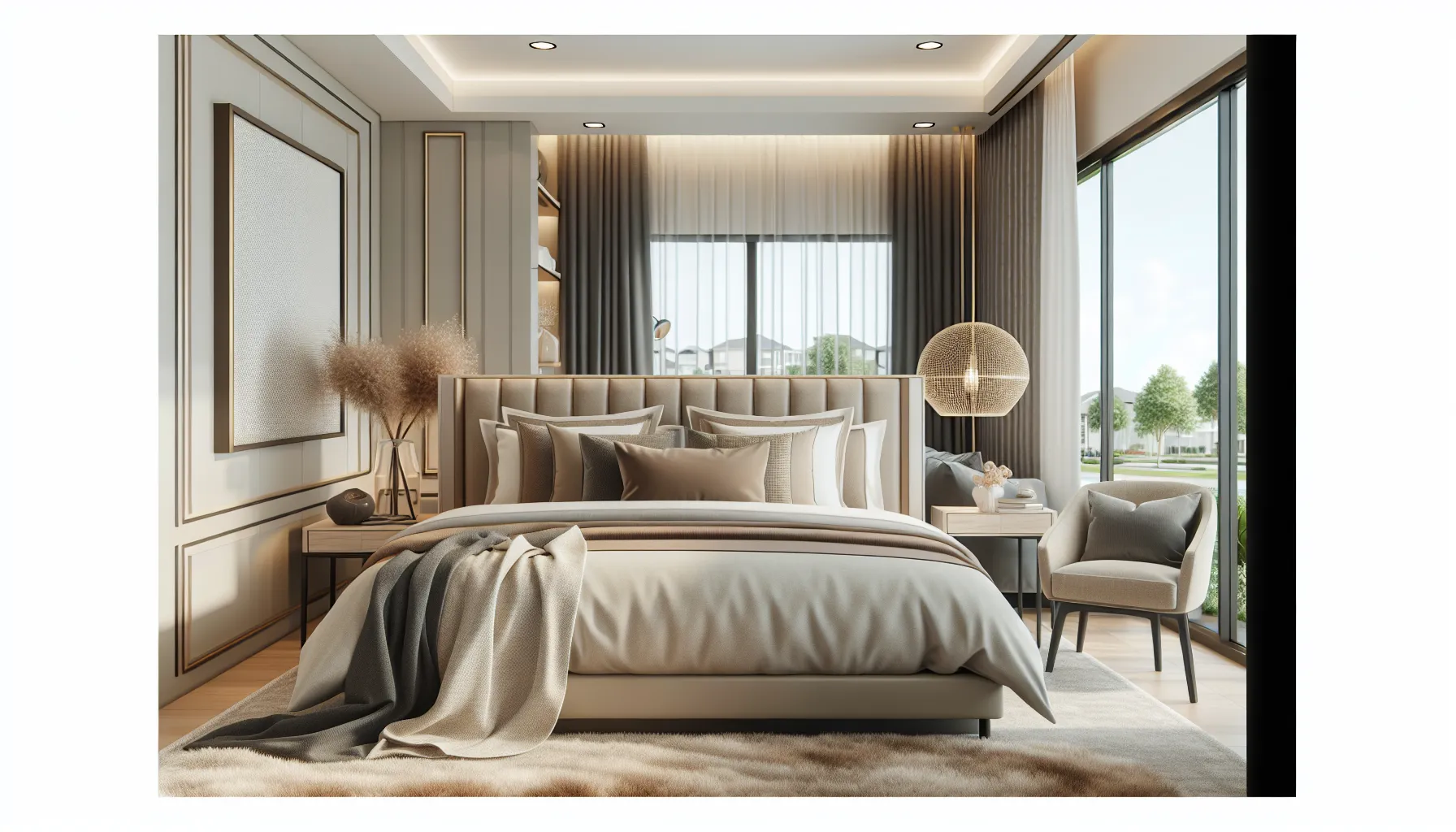Key Takeaways
- The term “master bedroom” originated in the early 20th century, symbolizing the largest bedroom and traditionally implying hierarchy within household structures.
- Changes in cultural attitudes toward gender and power dynamics have led to a re-evaluation of the term, with many now finding it outdated or exclusionary.
- Alternatives like “primary bedroom” and “owner’s suite” have emerged, reflecting contemporary values of inclusivity and equality in home design.
- Language in real estate significantly impacts buyer perceptions and emotional connections, making it crucial for real estate professionals to adopt inclusive terminology.
- The shift towards more neutral terms emphasizes personal comfort and relaxation in residential design, aligning spaces with modern ideals over historical power structures.
- Advocating for inclusive language in the housing market fosters a sense of belonging and represents broader societal progress toward equity, benefiting diverse homebuyers.
The term “master bedroom” has been a staple in real estate and home design for decades, but its origins and evolution are more complex than many of us realize. As we delve into this topic, we’ll explore how cultural shifts and changing societal norms have influenced the language we use to describe our living spaces.
From its beginnings rooted in hierarchy to its current implications of inclusivity and comfort, the term has undergone significant transformation. Join us as we unpack the layers behind “master bedroom,” shedding light on its historical context and what it means for modern homebuyers and sellers alike. Understanding this evolution not only enriches our appreciation for home design but also prompts us to consider how language shapes our living experiences.
Unpacking the ‘Master Bedroom’: The History and Evolution of the Term
The term “master bedroom” originated in the early 20th century as a descriptor for the largest bedroom in a home, typically reserved for the heads of the household. Traditionally, the term implied a sense of hierarchy and dominance within family structures, reflecting societal norms of that time. As we explore its evolution, we find that changing cultural attitudes toward gender and power have influenced language and terminology in real estate and home design.
In recent years, many have deemed the term “master bedroom” as outdated or exclusionary, sparking discussions around more inclusive language. Alternative terms such as “primary bedroom” or “owner’s suite” have emerged as options that better reflect contemporary values of equality and respect. These alternatives not only address concerns surrounding the traditional hierarchies associated with the term but also foster a sense of belonging and comfort in our living spaces.
As we’re navigating today’s housing market, understanding the implications of the terminology we use matters. Buyers and sellers alike have begun to recognize that language reflects broader societal shifts. The preference for inclusive terms signifies an evolving identity in homeownership, emphasizing personal preference over traditional norms. This shift reiterates the importance of thoughtful communication in marketing properties, ensuring that listings resonate with the diverse experiences of potential homeowners.
How we describe features in real estate shapes buyer perceptions and experiences. Reflecting on the implications of terminology enables us to connect more authentically with our clients and audiences. Embracing changes in language not only strengthens our listings but also encourages a more inclusive dialogue in the housing market, benefitting all who seek a home.
Historical Context

The term “master bedroom” has roots deeply embedded in historical context, reflecting societal structures and norms over time. Its journey from a term denoting hierarchy to one perceived as exclusionary underscores changes in cultural attitudes toward gender and power dynamics within households.
Origins of the Term
The phrase “master bedroom” emerged in the early 20th century, utilized primarily to signify the largest and most luxurious bedroom in a home. This term commonly implied a sense of authority, with the master often referring to the male head of the household. Homes built during this period frequently showcased a hierarchical layout, where the master bedroom symbolized both status and control. Such designations mirrored societal norms, positioning the family dynamic within a context of traditional gender roles.
Evolution in Home Design
As cultural perceptions have shifted, the term “master bedroom” has begun to lose traction. Recognizing the need for more inclusive language in home design, many real estate professionals now advocate for alternatives like “primary bedroom” or “owner’s suite.” This evolution reflects broader societal movements toward equality and empowerment, emphasizing personal comfort over dominance. Home design now incorporates elements that prioritize inclusivity, fostering environments where all family members feel at ease. The shift in terminology highlights an important acknowledgment of changing values and the need to adapt language for the modern homeowner.
Cultural Significance
The term “master bedroom” carries significant cultural weight, reflecting deeper societal attitudes toward gender and class.
Gender and Class Implications
The historical use of “master bedroom” often implied dominance, typically associated with the male head of the household. This label reinforced traditional gender roles and class structures. Homes from the early 20th century frequently showcased designs that prioritized male authority, reinforcing patriarchal ideals. As societal norms shifted, the gendered implications of “master bedroom” became increasingly criticized. Today, terms like “primary bedroom” signal a movement toward equity and inclusivity. This change illustrates our evolving understanding of gender dynamics and the desire to create spaces free from outdated hierarchies.
Changing Attitudes Towards Space
Attitudes toward personal space in the home have transformed, leading to a reevaluation of terminology. The transition from “master bedroom” to more neutral terms corresponds with a broader focus on well-being and comfort in residential design. Homeowners increasingly value spaces that promote relaxation and safety, aligning residential environments with personal identities rather than traditional power structures. This shift is evident in contemporary designs that prioritize flexibility and functionality, accommodating diverse lifestyles. By adopting inclusive language, real estate professionals can better resonate with modern buyers, fostering an environment where all feel welcome in their homes.
Modern Perspectives

Modern interpretations of the term “master bedroom” reflect changing societal attitudes. This shift from traditional meanings emphasizes inclusivity and comfort, aligning with the evolving values of today’s homeowners. Real estate professionals increasingly use terms like “primary bedroom” or “owner’s suite” to enhance relatability and create welcoming environments in home design.
Contemporary Alternatives
Contemporary alternatives for the “master bedroom” term prioritize clarity and inclusivity. For instance, “primary bedroom” now serves as a standard replacement in many listings, promoting equality. This shift captures a broader audience, recognizing diverse family structures and lifestyles. By adopting these alternatives, designers and real estate professionals ensure their language mirrors the values of inclusiveness. A focus on comfort and personal connection marks a departure from traditional power dynamics in home design, allowing all homeowners to feel valued.
The Push for Inclusive Language
The push for inclusive language in real estate addresses the need for sensitivity in terminology. Language shapes perceptions, and using terms that resonate with all audiences fosters a sense of belonging. Numerous real estate organizations now advocate for the use of inclusive substitutes, encouraging agents and developers to reevaluate their vocabulary. By prioritizing respect and awareness, we advance conversations about equity in the housing market. Embracing inclusive language not only strengthens relationships with clients but also reflects broader societal progress toward equality. Each homeowner deserves a space that honors their identity, underscoring the importance of language in creating welcoming environments.
Conclusion
The evolution of the term “master bedroom” reflects our changing values and priorities in home design and real estate. As we embrace inclusivity and comfort, it’s clear that language plays a crucial role in shaping our perceptions of space. By adopting terms like “primary bedroom” or “owner’s suite,” we can create environments that resonate with diverse lifestyles and foster a sense of belonging.
This shift not only honors individual identities but also promotes equality within our living spaces. As we move forward, let’s continue to advocate for language that reflects our collective commitment to inclusivity, ensuring that every homeowner feels valued and respected in their own home.
Frequently Asked Questions
What is the historical origin of the term “master bedroom”?
The term “master bedroom” originated in the early 20th century, signifying the largest bedroom in a home. It implied dominance, often linked to the male head of the household, reflecting a hierarchical layout in home design during that era.
Why is the term “master bedroom” considered outdated?
As societal attitudes have evolved, the term “master bedroom” is seen as exclusionary and outdated due to its historical links to gender roles and power dynamics, prompting a shift towards more inclusive terminology that reflects modern values.
What alternatives to “master bedroom” are being used today?
Current alternatives include terms like “primary bedroom” and “owner’s suite.” These terms prioritize inclusivity and are more reflective of contemporary family structures, emphasizing comfort and equality in home design.
How does language in real estate impact perceptions of homeownership?
Language shapes perceptions by fostering inclusivity and belonging. Using sensitive, modern terms in real estate helps create welcoming environments for diverse homeowners and promotes equity in the housing market.
Why is there a push for using inclusive language in real estate?
There is a growing recognition that inclusive language better represents diverse lifestyles and family structures, fostering respect and awareness in the industry. This shift aims to reflect modern values of equity and promote a sense of belonging among homeowners.






